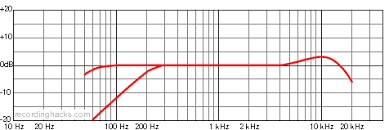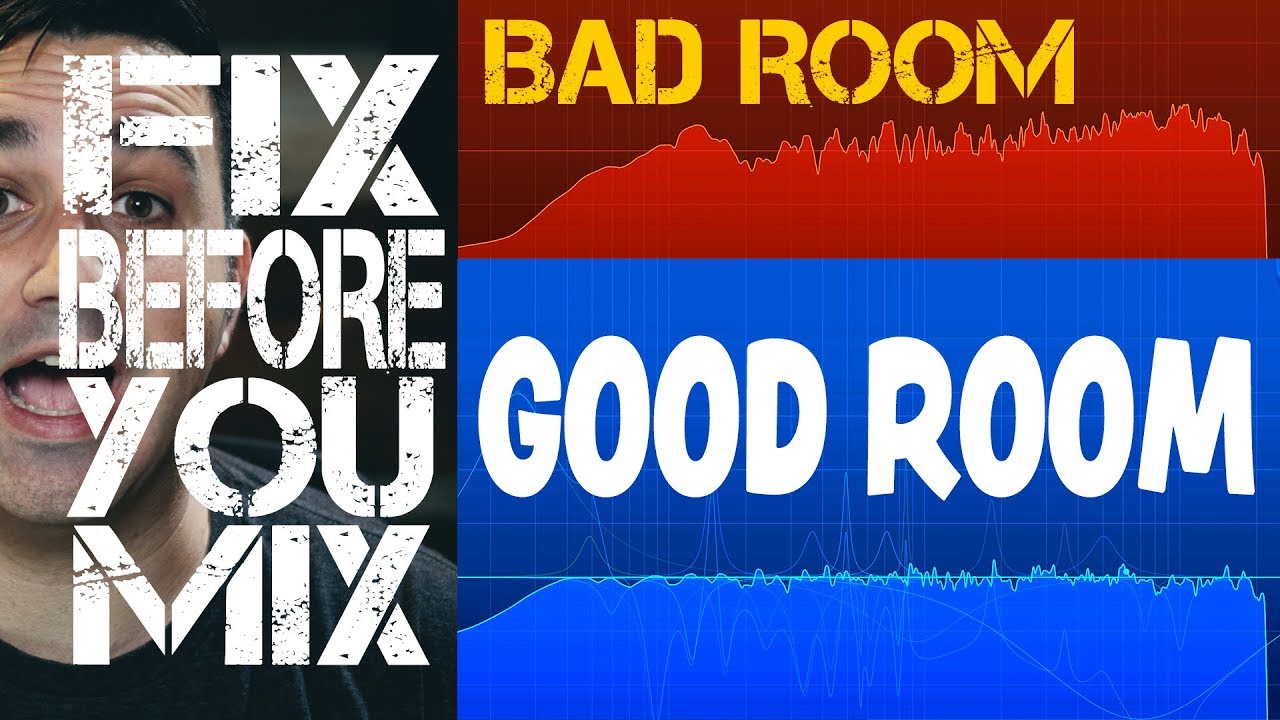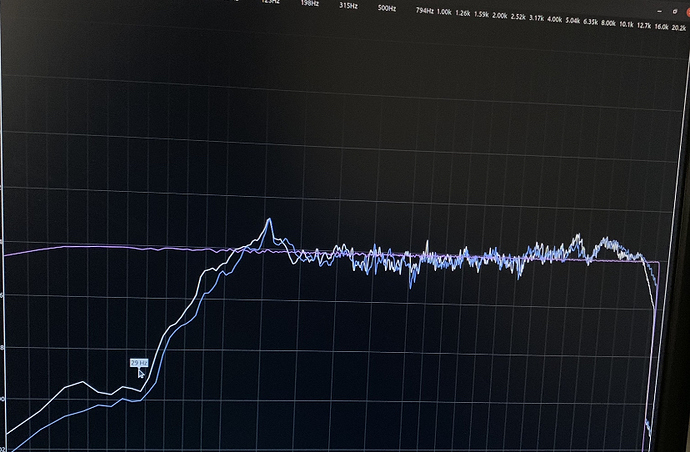I know ardours processor section is a good slot to add plugins to the output of the my system. I came across a YouTube YouTube of someone using pink noise, a special mic and eq to manually correct the eq response to be more balanced and flat. My issue is I hear about or people saying something about phase shifts and other issues. I do have windows and Linux but I prefer Linux, my only eqs I would use is eq10q and x42 eq but I’m not sure if these types of eqs are the right ones to use for this type of method. I mean some way this method is not good at all and should be using white noise.
EQ is no replacement for room treatment. It may fix the sound for one specific spot but if you move slightly from this spot the frequency response may be bad again in a different way. You probably already know this, but I thought it was important to mention. Then again Genelec DSP speakers has a system to do this automatically (if you buy their 500 euro kit for it).
When you say move from position do you mean moving the speakers around or just moving your head in different spots on your listening position.
If the room is untreated, then it is enough to move your head or your chair to another position. If the room is untreated the frequencies bouncing off the walls will cause combing filter effects when the sound waves combine with the direct sound from the speakers. If you correct this with EQ you only correct it for the specific spot where the measurement microphone is standing while EQ:ing. Then again Gelenec speakers has this feature, so it can sometimes make things better, but this depends on the room.
I don’t have much acoustic treatment yet but I do have things inside my bedroom but I have some things I can put up in certain spots to help reduce reflections around the room etc
It may work for you then.
Just to be clear why EQ:in does not solve the problem of reflections bouncing off the walls. When EQing your speakers to compensate for the combing filter created by the reflected sound waves combining with the direct sound from the speakers, you compensate for the effect for that specific spot. In that spot the reflections and the direct sound waves have a specific phase difference to each other. When you move your listening position the phase difference is completely different depending how far direct sound and reflections have traveled to that spot. So the combing effect attenuates / amplifies frequencies differently depending where in the room you are listening
Room treatment gets rid of the reflections or scatters them so much that the effect on frequencies coming out of the speakers is eliminated to attenuated greatly.
What your saying makes sense, what makes me confused is how confident people are when they do certain things as like the YouTube video I shared. It looks like it works but maybe it’s not the best thing to do
It all comes down to cost, complete room treatment is expensive. EQing might be okay if you know the limitations of it.
My mixing room is untreated and unEQ’d and I use a pair of Adam A7X’s for monitoring and I double check the mixes with Beyerdynamic DT-770 and DT-990 headphones. I often need to adjust instrument balance when switching from monitors to headphones. I try to make the balance a compromise between what sounds good on monitors and headphones.
I also move to different spots in the room while mixing with monitors to make sure nothing in the mix “sticks out” too much. You can expect bass frequencies get amplified near walls but you never know how the reflections affects mids / highs. When doing this for a while you kind of learn how the room sounds and what to expect from it.
This method is not perfect but has enabled me to make mixes that sounded good also in a completely treated room at work.
Don’t mistake confidence for correctness.
You could spend years studying room acoustics, but the short version is that you could potentially do something useful at low frequencies, where the wavelengths are significant fractions of the room dimensions, but even there you have to tread carefully. If there is a large resonance that makes you room boomy in the bass you can cut slightly at that frequency and improve the sound, but at higher frequencies as Mikhael mentioned, moving the microphone just a little bit up or down or side to side can show drastic differences in the response at mid and high frequencies.
Additionally the direct sound from the speaker to your ears is more important at short time frames (because of the ability to distinguish direction of sound), but the overall average frequency response in a room is determined by the direct sound frequency response, as well as the off-axis frequency response of the speakers and the reflectivity of the room (which varies with frequency).
If you are trying to measure the sound in the room, you will not have a way to distinguish the room average from the direct sound, so any changes you make to correct overall room frequency response will likely mess up the direct sound. In short other than cutting out an annoying bass resonance, you have a lot more chance of making things worse than better.
And to jump off what Chris said about confidence and correctness…
I will give credit to the author of that video for one thing… they labeled their video ‘Last Resort’
However the reality is even what they demonstrate is wrong. If you are tuning an audio system, you do with with a dual FFT so that you understand what is caused by uneven response in your speakers, vs phase issues from your speakers or reflections in the room. Doing what they did only shows magnitude, and not phase, and possibly even more of an issue, they are measuring in a single point in the room, so unless both of your ears are in that single point (Yea think about that for a bit) it will never be truly accurate.
Don’t get me wrong, it might be ‘better’, but accuracy is the key in mixing and while it is very possible, even likely you will get some form of more accurate, it won’t be completely accurate either. Also if you use the wrong EQ you will introduce more phase problems as well.
And honestly you will not be able to do much with reflections other than to fix them the correct way, by treating the room. You might be able to try to even out their magnitude issues in that one point in the room, but move your head and suddenly it is different, especially so with standing waves.
So end result, treat the room acoustically first, then worry about this.
SeabladeNice good job !!! It’s always good to know your room as well
I understand, if I were to use any type of correction via eq, would linear phase eq be the one to use. I use mostly Linux but I know the LSP eq has different filtering modes and not sure if only certain ones are typically recommended for these types of corrections. I know for me I’m just testing it out, I do have a bedroom setup and plan on putting up panels to take care of first reflections. I do have a big memory foam mattress bed in the room so that should help lol. I do hear differences when I mix and then listen on other mediums so I know my room has issues. Here is a screen shot of my speakers response compared to the pink noise sample that was provided from the YouTube video I shared. I had to adjust the level of the pink noise so that the line would be in line with my speakers
I can’t see the vertical scale, so I can’t really tell how big that variation is in dB, but that peak at around 120(?)Hz would be a candidate for removal with a parametric EQ (have to find the appropriate width/Q and depth of cut to remove that peak), but everything else is too high in frequency to do more than make very broad adjustments. For example a very slight shelf down at around 4kHz or 5kHz might help if that high frequency rise is real and not an artifact of something else (for example microphones often have a rising high frequency response at the point that the wavelength of the sound approaches the diaphragm diameter).
In general that looks pretty good though for a speaker in a room. Does your software have the ability to average measurements from several different microphone positions?
I should add a caveat to that “pretty good” comment I guess, the response seems to be rolling off really quickly below 120Hz. Is this a small speaker intended to be used with a separate woofer? If so the low frequency response could be different depending on where the bass speaker is placed (which seems to be missing in this plot).
Or are you trying to mix on a speaker with 4" mid-woofer drivers?
Ok so My measurement is not accurate because I used my condenser mic, I know it has a overall flat response but it has have a big of high end raised but I’m aware of that and I can always take care of that, also I forgot to turn off my low end roll off from the mic. the frequency response for my mic I will attach, also I will send my studio monitor response from the manufacturer measurements
I’m using the ardour spectral analysis, is there a setting to see the scale you were talking about.


Also I will double check the eq settings in my speakers are well, I do know that I have the eq for low end at the lowest because it’s on a monitor stand but close to a wall
Room EQ Wizard(REW) is the software you want. It’s java and works on linux, and it’s free. You’ll typically use a swept sine-wave to analyse the room and it will give you more accurate results than using coloured noise. It will also give you the RT60 time of the room (basically resonance by frequency, I guess you could say).
The Eq plugins you mention are great, and I really like the LSP ones, too.
WARNING: Much ranting ahead.
That said however, and this is a bitter pill to swallow - until you have done at least some acoustic treatment, you are completely wasting your time. I know I wasted plenty of mine!  Note that the very video you linked says that multiple times - this EQ stuff comes AFTER treating your room (measuring your treatment with REW is fun you can have right from the start, though).
Note that the very video you linked says that multiple times - this EQ stuff comes AFTER treating your room (measuring your treatment with REW is fun you can have right from the start, though).
Assuming you are in a normal room in a house, the single best thing you can do right now is to go down to your local hardware store, buy 4 bags of insulation material (one if that’s all you can afford), and sit them upright in the corners of your room (don’t even bother unwrapping them).
This will immediately give you some good absorption of the bass build-up in your room (like that 120Hz peak in your plot), and help with the overall sound of your room.
The next step is to unwrap a pack and make some sound absorption panels, and put them on the walls either side of your mix position to reduce first reflections. If you can space them ~ 10cm from the wall they’ll work even better.
Those two things will do 100 times more* than you can ever achieve with EQ corrections.
The problem with room resonances is, as others have pointed out, EQ won’t treat the problem. The bass standing waves are physical nulls and peaks - by adding more EQ you simply push the null or peak harder, which doesn’t do anything good. For the mids and up it can probably help, but then it’s hard to tell if your mic is accurate or not, and regardless, our meaty analog heads actually wouldn’t have a clue anyway - all of our senses have a form of Automatic Gain Control, so we tend to acclimate to whatever environment we’re in†. This is why all the good mixers say “get to know your room” and “use reference tracks”. Most of the other stuff is fiddling about in the “10%* of the problem” space, but room treatment is the “90%* of the problem” area, and you cannot fix it with EQ or phase-correction.
I’m not an audio professional (and my mixes still suck), but I read more than is healthy. I can guarantee you that the above is a good first-points summary of the physics as it applies to home studios. It goes a LOT deeper of course, but in a small home studio, nothing matters as much as corner and reflections absorption, and before you’ve got that done, everything else is just “pissing into the wind,” as we say down here in Oz.
Oh, and don’t buy those wibbly foam panels that sponsor youtubers, they do not absorb bass (helpful perhaps with HF and HF diffusion, but that’s not your problem). Come at me, Auralex.
The best (single) resource I’ve seen is this multi-part article by Argen on speaker and room set-up. I strongly recommend reading all of it and following their advice - it’s refreshingly short on rubbish. Looking at my notes, my summary take-aways from that series were (in order of “do this in this order”):
- mix position: If you can’t be 38% from the front wall, try 38% from the back. But really, be 38% from the front, and centered left/right.
- speaker position: at 30 degrees either side of your mix position. if you can’t get them far from the wall (>21"), go as close as possible to the wall (this moves the boundary interference band up in frequency where it’s treatable with absorption). Ideally, flush-mount.
- absorption locations, in order of priority: corners, first reflections, speaker boundary.
- rear wall diffusion is good if you have more than 10 feet (3m) of space behind the listening position, otherwise go for more absorption.
I think for sound panels, in a room less than 16 feet (5.3m) long, go for corners, left/right reflection points, ceiling cloud, back wall. Don’t forget you have corners at the wall/ceiling, wall/floor joins as well as the wall/wall joins.
The above things are “rules of thumb” which will give you the best “bang for your buck”. Everything is a trade-off (life lesson, right there) and there might be good reasons for following different rules, but do so deliberately, not just because the better thing was less convenient.
Of course, in the interests of full hypocrite disclosure, I’m still agonising over which locally-available insulation to buy, because I’m over-analytical and lazy…
*: Yes, of course those numbers are made up. I’ll bet you they aren’t far off, though.
†: Citation required.
Thanks for your response, i will try not to go insane with this
This topic was automatically closed 91 days after the last reply. New replies are no longer allowed.

